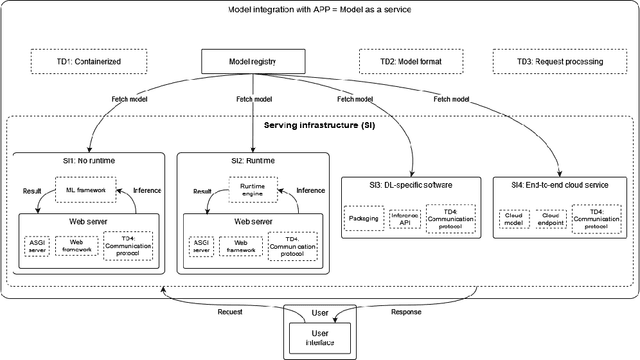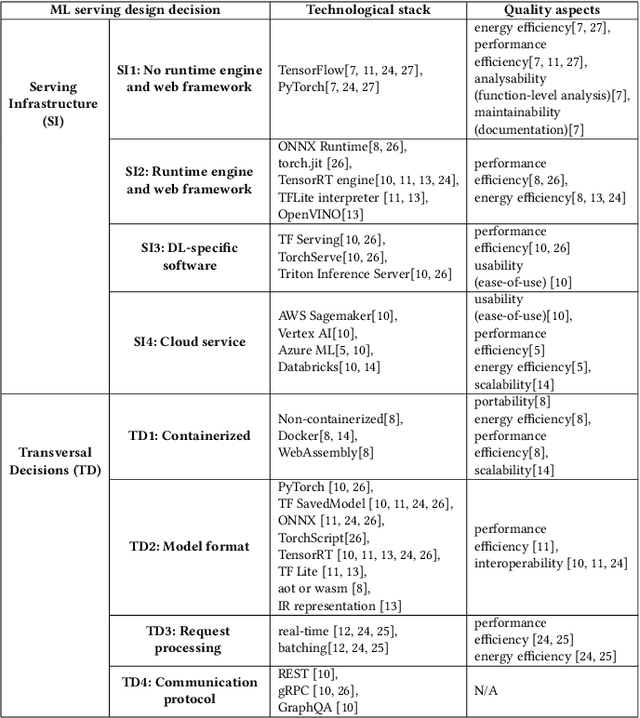Identifying architectural design decisions for achieving green ML serving
Paper and Code
Feb 12, 2024

The growing use of large machine learning models highlights concerns about their increasing computational demands. While the energy consumption of their training phase has received attention, fewer works have considered the inference phase. For ML inference, the binding of ML models to the ML system for user access, known as ML serving, is a critical yet understudied step for achieving efficiency in ML applications. We examine the literature in ML architectural design decisions and Green AI, with a special focus on ML serving. The aim is to analyze ML serving architectural design decisions for the purpose of understanding and identifying them with respect to quality characteristics from the point of view of researchers and practitioners in the context of ML serving literature. Our results (i) identify ML serving architectural design decisions along with their corresponding components and associated technological stack, and (ii) provide an overview of the quality characteristics studied in the literature, including energy efficiency. This preliminary study is the first step in our goal to achieve green ML serving. Our analysis may aid ML researchers and practitioners in making green-aware architecture design decisions when serving their models.
 Add to Chrome
Add to Chrome Add to Firefox
Add to Firefox Add to Edge
Add to Edge